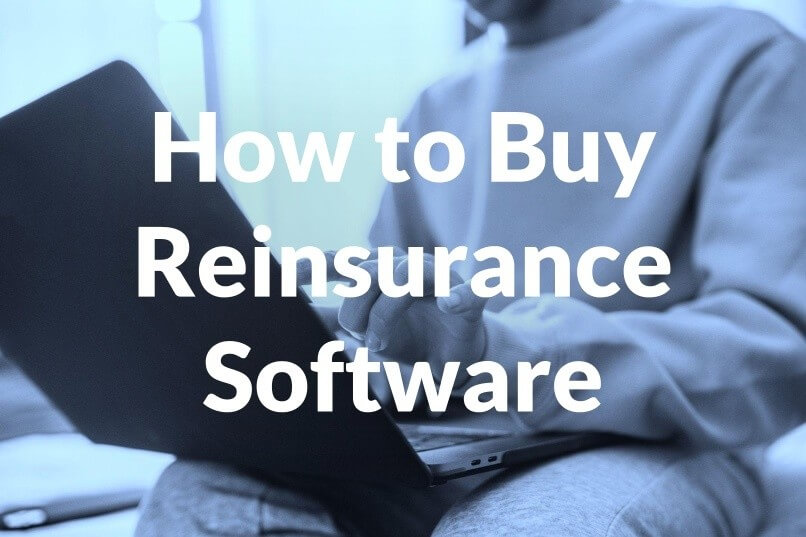I’ve sat on both sides of the fence over the course of my reinsurance career, evaluating and selecting software partners as well as selling a variety of “stuff” to insurance companies.
The internet is full of guides and ‘how-to’ documents for the evaluation part of buying software but the number of guides on buying reinsurance software are few and far between.
Most reinsurance teams we talk to at Supercede do the evaluation part really well.
But after determining the business need, evaluating various supplier options, and deciding which to go with, what next?
How do we actually go from deciding we want something to having that implemented and used in the business?
Picture the scene: sales teams, product teams, client success teams - all have interacted with you through various demonstrations.
You were secretly hoping it didn’t meet the brief, that way you could let them down gently and professionally, or just not arrange the next meeting (it happens!).
Unfortunately, they’ve directly addressed the business needs and successfully linked the value proposition of the software to the problems causing pressure in your department.
And to make matters worse, you actually really like the solution.
Scary stuff.
It feels like there’s a lot of work ahead, the pressure is on and it’s your neck on the line if you’ve made a mistake.
Combined with this feeling, is the fact you’ve never gone through this process before.
And how can you assure success in something you’ve never even attempted before?
I’ll tell you.
The bulk of my career has been helping companies minimise risk and articulating clear business value internally when putting new software solutions in place.
And what happens when things go well?
Everyone looks great:
- You’ve solved a pressing business problem for your organisation.
- You’ve articulated clear value for money and risk mitigation.
- The supplier has their sale plus a partner they can work with for a long time.
I’ve put together ten quick tips that aim to make this much less scary and help you make an informed decision when buying reinsurance software:
1. Be Honest With the Supplier on Where the Value Lies in the Reinsurance Software
Most software wasn’t built specifically for your company.
There’ll likely be a set of features that you don't need or don’t add a ton of value.
Equally, there’ll be features that make a real tangible difference to the way you do business.
Make sure this feedback finds its way back to the supplier as they’ll be able to tailor future discussions to focus only on a relevant value proposition.
This makes the solution sound simpler and makes it easier for all stakeholders to make decisions down the line.
2. Bring a Budget Holder Into Discussions Early
If you don’t currently control a budget, you’re unlikely to magically be granted one just for this piece of reinsurtech.
At the very least, someone else’s budget will be expanded to include this purchase so make sure they’re present for early demonstrations of the reinsurance software.
It might feel like you’re wasting their time or bringing them in early but they’ll be experienced in the value needed to secure a budget and will ask questions that will help you identify a wrong-fit solution earlier.
This saves everyone's time and effort in the long-run.
3. Work Out Which Other Functions and Departments the Solution Touches
You’ve looked at the reinsurance software from your own perspective, but try to also document how it might ease the load on other parts of the company.
This could exponentially strengthen the business case you’re building.
For example, in recent Supercede Research, we found that Supercede Secured a 100-hour time saving for a ceded re team preparing a single treaty; but that the reduction in time spent by other departments was almost 85%.
Eighty-five percent!
That was the killer number that really made the difference to the whole organisation.
4. Ask the Reinsurtech Supplier for Help in Building the Internal Business Case
Business cases are hard.
Most people tend to try to work out time saved and then multiply that by some fictional salary in order to find an ROI number.
That’s maybe one-fifth of the value of reinsurance software; people sometimes fail to think about:
- Internal team efficiency
- Improved broker relations
- The value in time spent elsewhere doing more important things
Most suppliers write business cases in their sleep.
If you’ve followed the advice so far, they’ll also know who else comes into the process and where the valuable features make an impact.
They can save you a big part of a job here.
5. Research the It Procurement Process, Ask Good Questions in Advance
You know that person who sits at the desk in the corner and looks at you disapprovingly whenever a file on your computer “just deletes itself”?
They’re your new best friend.
And for very good reason - insurers take IT security and due diligence really seriously.
Insurers run complex networks with untold data locations and transfer protocols (you know this, this is what causes your data cleansing problems that Supercede fix).
Ask your supplier for a data security run-down in advance and give it to your IT team, this should help give advance notice of how the software is structured and answer some basic questions.
They’ll then be able to more accurately tailor any further questions they have and the process will be easier on everyone.
Win. Win. Win.
6. Ask For Additional Documents That Help Set the Context
You’ll notice that some of the previous tips involve bringing other people in the company into conversations at quite an early stage.
You don’t want to be spending half of each conversation explaining what the reinsurance solution does and how it helps, especially to departments that might need very specific information.
Ask your reinsurtech supplier for a plain English 1-pager that explains the business problem that their software solves and how it does it.
You can easily send this to other interested teams to provide business context ahead of technical conversations.
You’ll find it saves a lot of confusion.
7. Don’t Be Scared of the Cost, Ask for Benchmarks and Validate It
Reinsurance software is expensive.
Possibly more expensive than you expected.
Whilst this is unexpected to you, it probably isn’t to procurement or IT teams.
By now you should have a business case that highlights the time, effort, expense and efficiencies that using the reinsurance software will bring.
This isn’t enough on its own though.
Ask what the factors are that feed into the pricing model.
Your supplier can even probably provide comparative cost documents of alternate solutions or at least a cost estimate of remaining with the status quo.
Expect 6-figure bills but don’t be scared of them if the underlying value is worth it.
8. Scope the Internal Work Required and Obtain Commitments From the People Involved
New software requires some business change.
That’s just a fact.
Most reinsurtech suppliers would love to do everything for you, and at Supercede we put dedicated product and client success managers within your team to minimise the impact on your day-to-day.
It’s unlikely that everyone will avoid having to help out though.
Find out early what work your team needs to sign up to and get early commitment for it.
9. If You See Risks in the Project, Pro-actively Work to Remove Them
Taking a punt on a small tech company rather than an old industry stalwart?
Unsure of what your overall usage might look like and afraid of signing up to big commitments?
Every software purchase has risks attached to it.
Every supplier I’ve ever worked with is more than happy to mitigate these risks for you through bespoke contractual terms, exit clauses or rate guarantees.
Just ask!
10. Don’t Always Act as the Go-Between! Direct Communication Is More Efficient
It’s really tempting to act as the only point of contact between a reinsurtech software supplier and your own organisation.
You ensure you’re aware of every conversation so you don’t get blindsided; you ensure there is context to every conversation and you prevent aggravating colleagues who are busy in their day jobs.
However, you will burn out very quickly trying to manage legal conversations, IT conversations, procurement conversations and more.
Reinsurance suppliers are very experienced at dealing with all of these spinning plates.
Why not make a direct intro and ask to be kept on copy in communications.
This makes everything run more smoothly without causing undue stress.
11. Try to Have Some Fun
Ok, I said there’d be 10 points and I’ve gone ahead and made an 11th.
I couldn’t leave without the most important part.
Working with a software vendor is a really valuable experience for your career but it can also be rewarding.
You get to see first-hand how a reinsurtech company works and most people are really nice - you might even make some new friends like this lovely lot!
So there it is, the 10 hottest tips on how to buy digital reinsurance technology.


